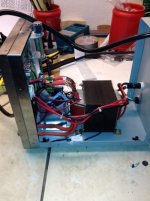ElectricGod
10 MW
garolittle said:tatus1969 said:Never owned a Sunkko, but I can tell that I have quite a few customers who told me that they have dumped their Sunkko after having used kWeld 8)tomjasz said:My POS dead Sunnko was $250. My new KWeld will be $234.
The real question is will they perform better?
I am one of those who dumped the Sunkko after using the kWeld. 8)
Sunnko = POS
KWeld = awesome!
I've owned a Sunnko for a couple of years now and have done a few battery projects with it, but it was always problematic and worked poorly. I was never happy with the welds it did. I'm cheap if I can be, but this was one time that being cheap was a bad idea. Once I decided to buy a KWeld and then tried it out...there was no comparison. Now I wonder why I lived with the shitastic Sunnko for so long!





